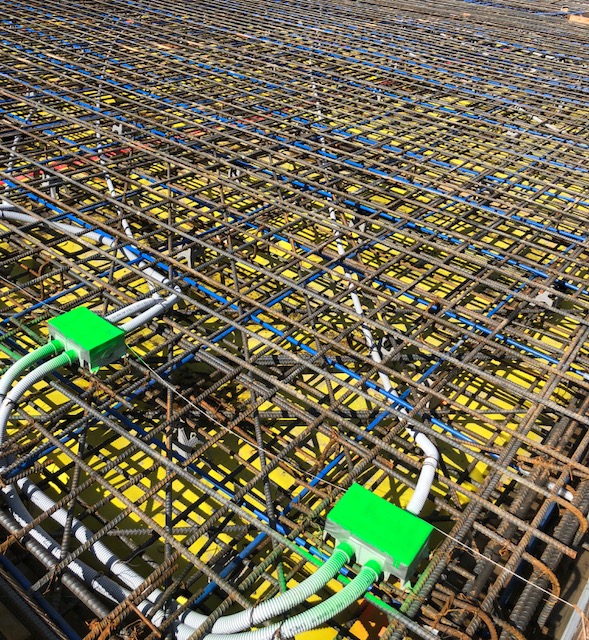Exploring the Midst: A Comprehensive Guide to Concrete Scanning and Its Diverse Applications
In the world of building and construction and infrastructure advancement, the precise process of concrete scanning holds a crucial function in making certain the structural stability and safety of jobs. As technology remains to advance, the applications of concrete scanning have increased far beyond plain surface-level analyses. From identifying rebar and post-tension wires to drawing up channels and spaces hidden within concrete structures, the abilities of contemporary scanning methods are both important and impressive. Nonetheless, the true depth of concrete scanning's possible reaches even additionally, branching into unforeseen fields and stimulating innovative services. The interconnected web of possibilities that concrete scanning offers is not only remarkable yet likewise crucial for the advancement of various sectors.
Value of Concrete Scanning
Comprehending the importance of concrete scanning is important in making certain the safety and security and honesty of structures throughout building and construction and improvement tasks. Concrete scanning makes use of sophisticated modern technologies such as ground-penetrating radar (GPR) and electro-magnetic induction to discover ingrained things, gaps, or various other abnormalities within concrete structures.
Additionally, concrete scanning plays an essential duty in making certain conformity with structure codes and regulations that mandate the security of existing structural parts during building and construction activities. By properly drawing up the internal composition of concrete, scanning technologies make it possible for building and construction specialists to make informed choices that promote the structural stability and resilience of buildings and infrastructure jobs. Fundamentally, the value of concrete scanning exists in its ability to secure both the architectural stability and the workers associated with building and construction ventures.
Technologies Used in Concrete Scanning
Concrete scanning depends on sophisticated innovations such as ground-penetrating radar (GPR) and electromagnetic induction to properly discover ingrained objects and abnormalities within concrete frameworks. Ground-penetrating radar runs by sending out high-frequency electro-magnetic waves right into the concrete.
Electromagnetic induction, on the various other hand, functions by generating electromagnetic fields around a concrete structure through a transmitter coil. When steel things exist within the concrete, they interfere with these magnetic fields, creating eddy currents to flow via the metal. By determining the changes in the magnetic fields with a receiver coil, the system can pinpoint the place of metal things in the concrete.
These sophisticated innovations play a crucial duty in non-destructive screening, guaranteeing the security and integrity of concrete frameworks in numerous sectors.
Applications in Construction Sector
Within the construction market, concrete scanning modern technology discovers diverse applications that boost project performance and safety. In addition, concrete scanning is used for locating voids, such as air pockets or locations of damage within concrete, which can compromise the total toughness of a framework. Concrete scanning plays an essential role in top quality control by validating the thickness of concrete covers over support, making certain compliance with layout requirements and standards.

Security Advantages of Concrete Scanning
In the realm of building safety and security, the execution of concrete scanning technology presents a vital benefit in preemptively identifying prospective threats and strengthening architectural honesty. By using innovative scanning techniques such as ground-penetrating radar (GPR) and electro-magnetic induction, building and construction teams can accurately situate rebar, post-tension cable televisions, conduits, and various other covert items within concrete frameworks. This proactive technique considerably lowers the danger of accidental strikes throughout exploration, reducing, or coring activities, consequently protecting against costly problems, injuries, and task hold-ups.
In addition, concrete scanning boosts worker safety by providing real-time details regarding the structural problem of concrete aspects. By dealing with possible security concerns without delay, concrete scanning adds to creating a secure functioning environment and alleviating the likelihood of structural failures or mishaps on building and construction sites.
Future Fads in Concrete Scanning
Arising innovations in scanning technology are positioned to reinvent the field of concrete inspection and evaluation. One significant fad that is getting traction is the assimilation of fabricated intelligence (AI) and equipment discovering formulas Read Full Article right into concrete scanning devices. By taking advantage of the power of AI, these systems can examine vast quantities of data accumulated during scanning processes to give more in-depth and accurate understandings into the condition of concrete structures. This can help in spotting concealed defects, predicting prospective structural failings, and even suggesting maintenance strategies.
One more significant trend is the development of more portable and straightforward scanning gadgets. Miniaturization of scanning equipment enables for less complicated accessibility to constrained areas and remote areas, making assessments extra efficient and thorough. Furthermore, innovations in wireless communication modern technologies enable real-time data transfer and analysis, facilitating quicker decision-making processes.
In addition, there is a growing emphasis on sustainability in concrete scanning technologies - RainierGPR Concrete Scanning. Makers are progressively integrating eco-friendly products and energy-efficient attributes into their devices to decrease environmental effect. These future trends are set to boost the effectiveness, accuracy, and sustainability of concrete scanning practices, forming the market's future landscape
Conclusion
Finally, concrete scanning plays a vital function in the building industry by making sure the safety and effectiveness of numerous jobs. By utilizing advanced modern useful reference technologies, such as GPR and radar imaging, experts are able to precisely find prospective hazards within concrete frameworks. The applications of concrete scanning are large and remain to advance, making it an essential device for preserving the integrity of structures and facilities. As technology advances, the future of concrete scanning holds appealing developments for improving building and construction procedures.
